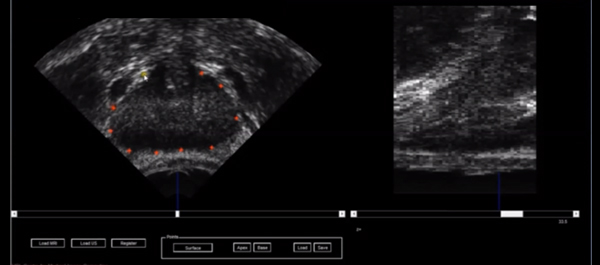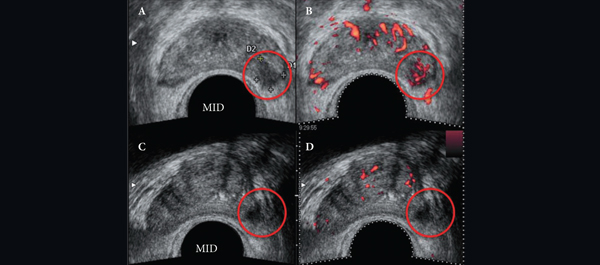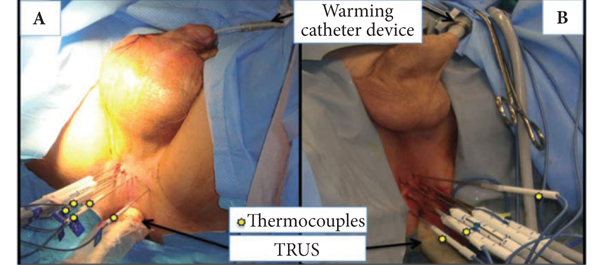Editorial: Doubling our precision of risk stratification in early prostate cancer? Too good to be true?
It is difficult to over-estimate the enormity of the revolution involved in transitioning away from an organ-based system of care in prostate cancer (prostatectomy or radiotherapy to prostate cancer of any grade, number, location or volume) to one in which the target condition is defined and verified, and then subsequently treated with a margin. Since Hugh Hampton-Young undertook the first radical prostatectomy more than 100 years ago, an organ-based system of care has been the only plausible strategy for men with early-stage prostate cancer. This is because our risk stratification methods could certainly tell us who had prostate cancer when it was indeed identified, but they could not tell us with any degree of precision how much cancer was present (number of foci and volume of cancer), what grade it was and where within the prostate the cancer resided. Surgery or radiotherapy to the whole gland, it was thought, was a reasonable mitigation (at the cost of over-treatment in a significant proportion of men) to the systematic under-estimation of risk to the patient. The degree to which our attempts at risk stratification failed our patients was emphasized in a recent UK report that showed an increase of >50% in histological grade (the most important determinant of risk) at radical prostatectomy compared with the risk the patient was told at the time of diagnosis[1]. ‘Upgrading’ is an inverse measure of the quality of our risk stratification.
With this background it should be of little surprise that there remains considerable skepticism about our ability to localize disease within the prostate, define its volume with some degree of precision and identify the worst histological grade within the tumour most of the time. These conditions, which most patients, quite reasonably, might expect of a modern cancer diagnostic programme, need to be fulfilled if we are to move away from an organ-based strategy for all towards a system of care that risk stratifies with precision, treats only those who are likely to benefit and tries to preserve tissue and function when we are able to do so.
The technologies and developments that have permitted a reduction in risk stratification error from 50 to ~5% are the subject of a paper by Tran et al. [2] in the present issue of BJUI. This group from Australia exploited a cohort of men that underwent a series of tests that culminated in a radical prostatectomy. These comprised: high-quality multiparametric MRI at a range of magnet strengths; formal scoring of the MRI using an ordinal scale of risk; a subsequent 5-mm transperineal template-guided biopsy modified from Winston Barzell’s original account; and additional sampling of prostate sectors that corresponded to a high likelihood of clinically significant cancer based on the MRI reading, a process otherwise known as ‘targeting’. The outputs of these tests were compared with the presence or absence of clinically significant prostate cancer in the 100 prostate lobes evaluated from the 50 eligible men who underwent surgery. The authors’ a priori threshold for declaring clinically significant disease in the tests was the presence or a PIRADS 4–5 MRI lesion (with or without concordant pathology) and/or the presence of exclusive Gleason pattern 3 amounting to ≥4 mm maximum cancer core length or the presence of any Gleason pattern 4 or 5 [3]. At radical prostatectomy slightly different criteria were employed. Clinically significant prostate cancer constituted an exclusive Gleason pattern 3 lesion provided it was ≥1.3 mL. The presence of patterns 4 and 5 within the lesion triggered ‘significance’, as did evidence of capsular invasion or extraprostatic extension.
Although it was a small study, the men included were exposed to the best diagnostic profile that it was possible to have and were subjected to a reference test which most of us would trust. What did they find? Just how well did a modern diagnostic panel rule in or rule out prostate cancer that exceeded a minimum threshold of 4 mm of Gleason pattern 3? Within the hundred lobes that were evaluated, 21 clinically significant cancers were identified in the diagnostic process. At radical prostatectomy two of these were at the midline and therefore attributed, within the rules, to both sides of the gland. In one of these cases there was a 5-mm diameter (0.1 mL) Gleason 3+4 lesion with 10% Gleason pattern 4 that was overlooked by the combined diagnostic process. A lesion of this volume can evade a well-applied sampling strategy based on a 5-mm sampling frame, especially if the lesion is non-spherical. The relatively low component of pattern 4 combined with the relatively low volume means that MRI would also have a hard time detecting it. Under the conditions described in the present paper, the authors concluded that combined MRI and intensive biopsy conferred a sensitivity of 97% and a negative predictive value of 91% for a fairly conservative definition of clinically significant disease. This level of accuracy, which is nearly twice as good as that of which we were previously capable, will result in major benefits for patients in terms of communicating risk with an order of precision that was hitherto not possible. This should translate to more appropriate treatment allocation, both avoiding unnecessary treatment and having treatment when it is likely to be beneficial. It should also result in a significant proportion of patients being offered the option of a tissue-preserving therapy when this is an option [4]. Most importantly, this new precision opens up an opportunity for greater involvement of the patient in the process of informed decision-making [5]. Something that was not really possible in the face of yesterday’s diagnostic uncertainty.







